You’ve found the perfect spot for your hammock, but you’re missing the second tree? Many beautiful places lack the second attachment point for hanging a hammock. The solution is a lightweight backpack hammock stand. With it, you can secure the hammock to just one tree.
To hang a hammock to one tree, you have two options:
- You can attach the hammock to the car for the missing tree.
- Alternatively, you can build a hammock stand as a substitute for the second tree and hang the hammock on it – here’s what you need for it.
A lightweight hammock stand as a portable tree substitute
When I want to attach a hammock to just one tree, I need a second hanging point. There are only portable hammock stands for both hammock ends. The collapsible Wise Owl hammack stand* folds down to a small package but it is far to heavy for backpacking. It’s more suitable for car travels.
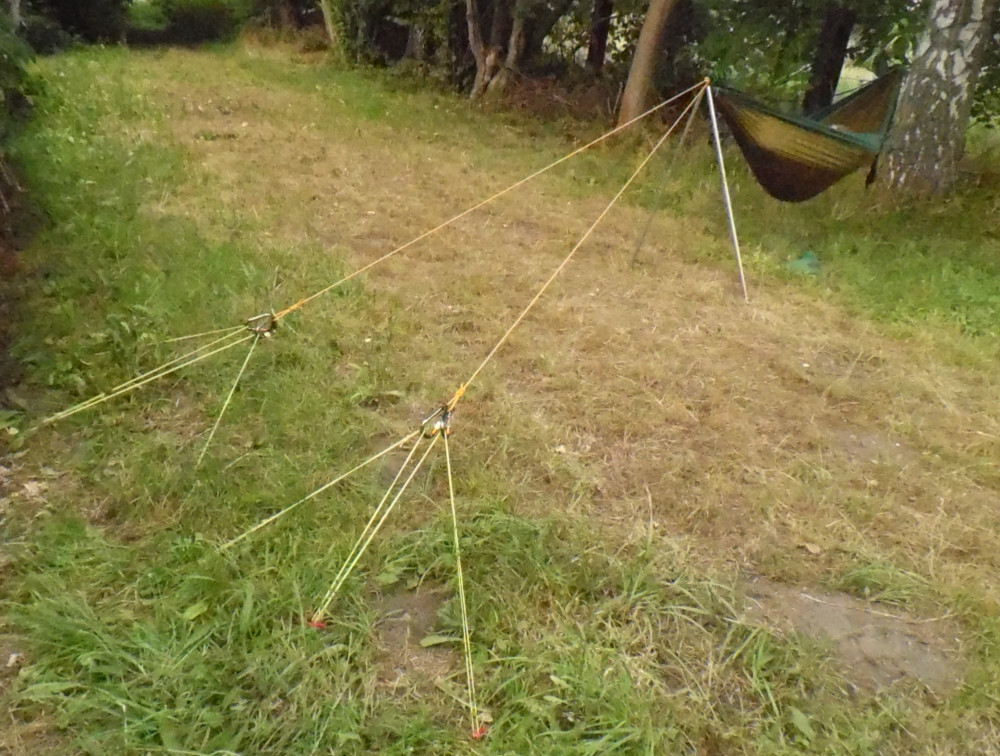
A small ultralight hammock stand In my search for a lightweight hammock stand for on-the-go, I found the following solution: an portable ultralight hammock stand made from tent poles.
After several attempts, I built a stable tree substitute using these components to hang a hammock on just one tree.
To build the hammock stand yourself, you’ll need:
- 2 steel rod tent poles*
- 20ft of 1/4in cord rope for climbing*
- 4 hammock carabiners*
- 40ft of 1/8in throw line*
- 6 tent stakes*
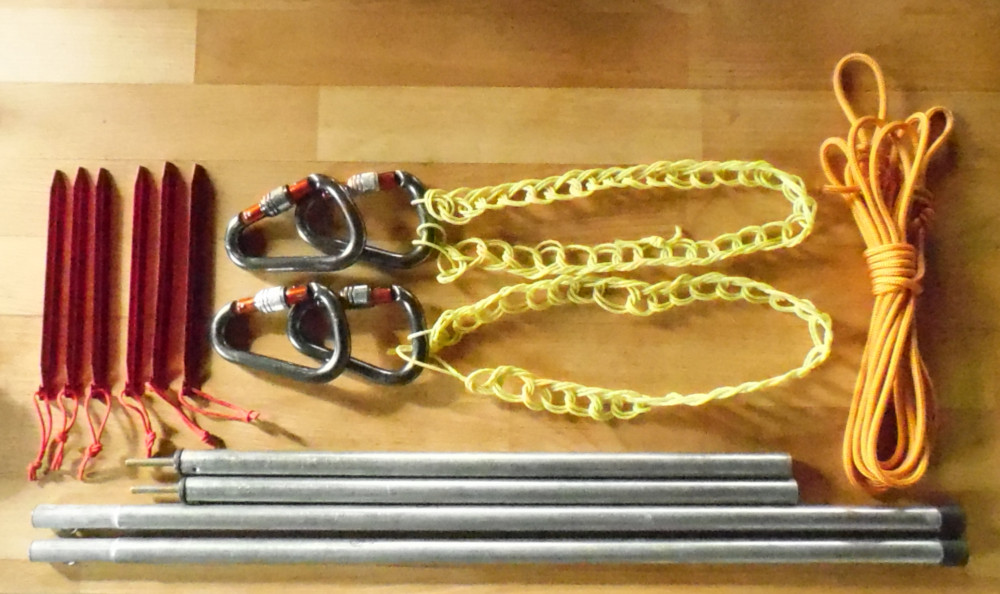
How does the hammock stand act as a tree substitute for hammocks?
The hammock is directly attached to the two-legged frame made from tent poles. The height of the frame determines the maximum height for the second hammock hanging point. Since the loaded hammock pulls the two attachment points together with considerable force, the frame must be securely anchored. For this reason, I use six tent stakes for the anchoring.
Distributed anchoring from the hammock stand replaces a missing tree
Trees transmit the forces from hammocks to the ground through their roots. The same must be achieved with the hammock stand. It is crucial to choose the right tent stakes for this purpose! In my first attempts, I simply used steel pegs. When I then lay down in the hammock, it immediately ripped out of the ground and the tent stakes flew past me with the anchoring lines.

Use durable tre-beam tent stakes!
After this shock, I extensively researched tent stakes. There are specific tent stakes for each use case and type of ground. V-,Y- or X-shaped tent stakes are the best choice for stability and low weight when used as a tree substitute. They provide a large surface area to distribute the forces over as much ground as possible without bending.
Distributed self-centering anchoring
To distribute the forces into the ground, six separate lines from the top of the frame to the tent stakes would have been enough. However, in practice, this often doesn’t work out as planned. The tent stake cannot always be placed at the farthest point of the anchoring line in the ground. Sometimes there are rocks in the soil or the ground is simply too soft. With such a simple anchoring, all tent stakes are loaded with the same force. If individual anchoring lines are not taut, all the force is borne by the most tightly anchored stake. It may fail, and all the force will be transferred to the next most tightly anchored tent stake, triggering a chain reaction.
Self-centering anchoring using carabiners
Self-centering anchoring for the hammock stand distributes the force evenly across all tent stakes, regardless of their position in the ground. Such anchoring is used in climbing. It’s used when there’s a risk that one anchor point for abseiling might not hold the weight. The load is then distributed evenly across multiple anchor points.
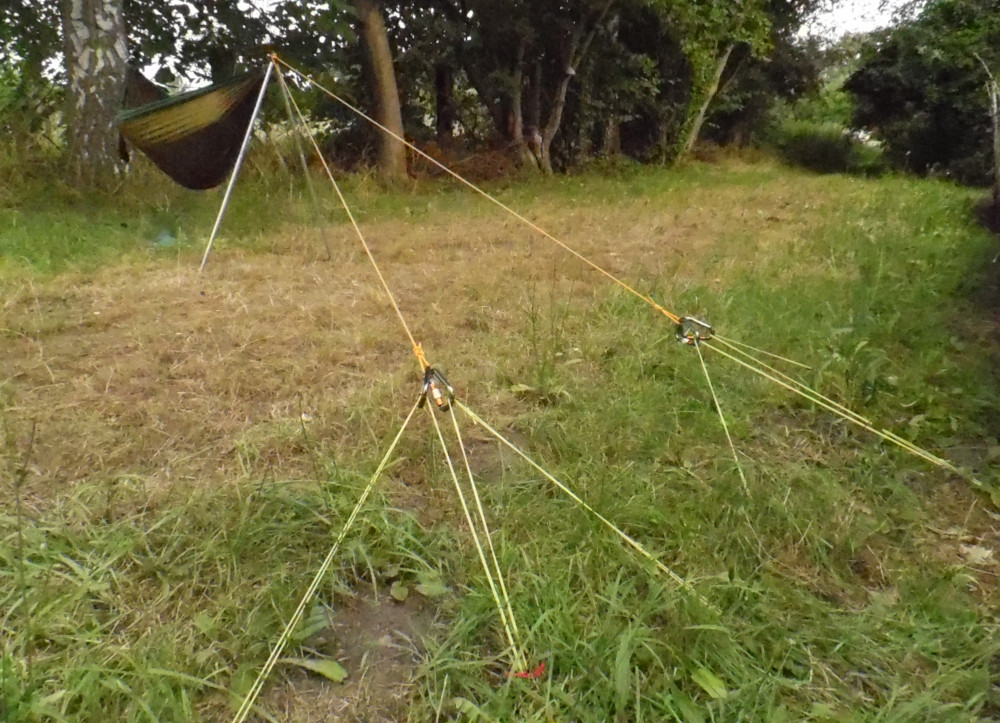
Instructions: Building a portable hammock stand as a tree substitute
1. Cut and prepare the cord rope
Cut the cord rope to a length of 20ft and melt the ends together with a lighter. This prevents the outer sheath from separating from the core. Tie a loop for the two carabiners at both ends of the climbing rope. I use the figure-eight knot for this.
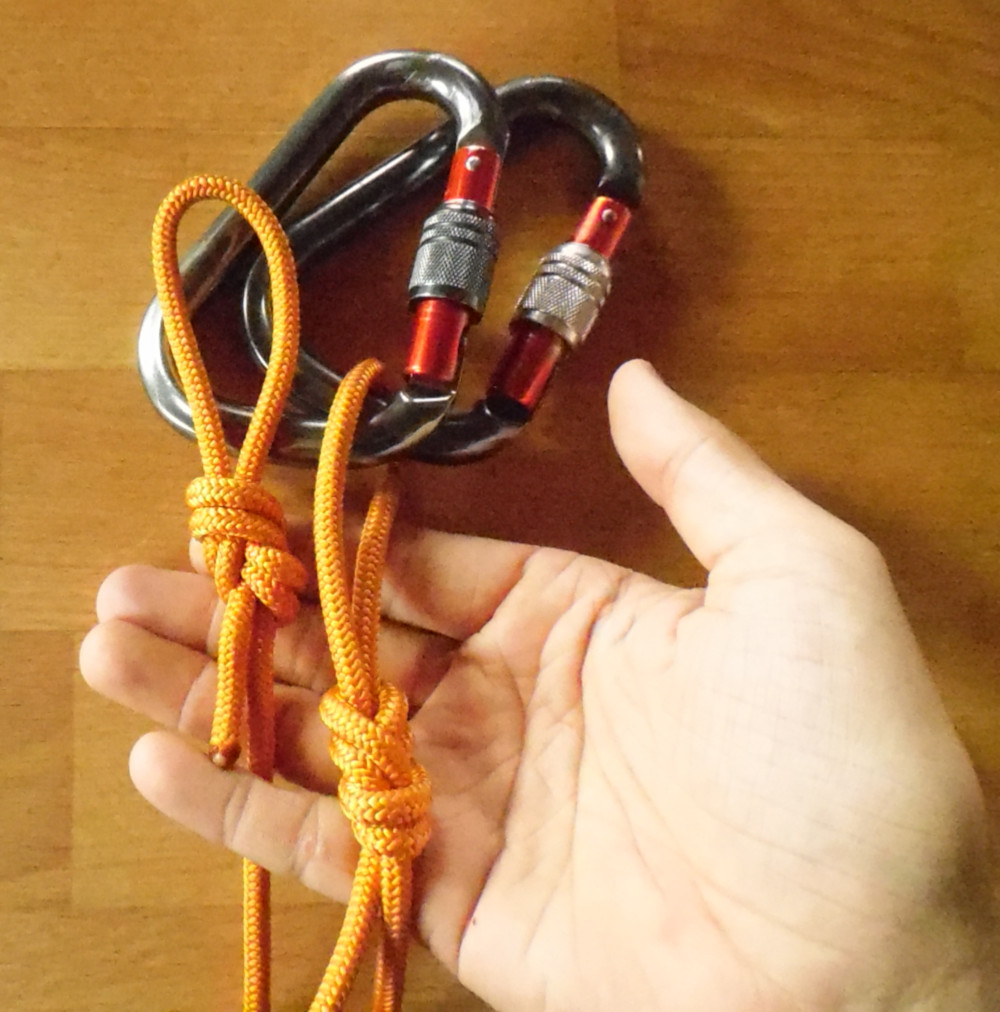
2. Prepare the throw line
For the anchoring, you’ll need two 40ft pieces of throw line, which you connect to a loop using a double fisherman’s bend.
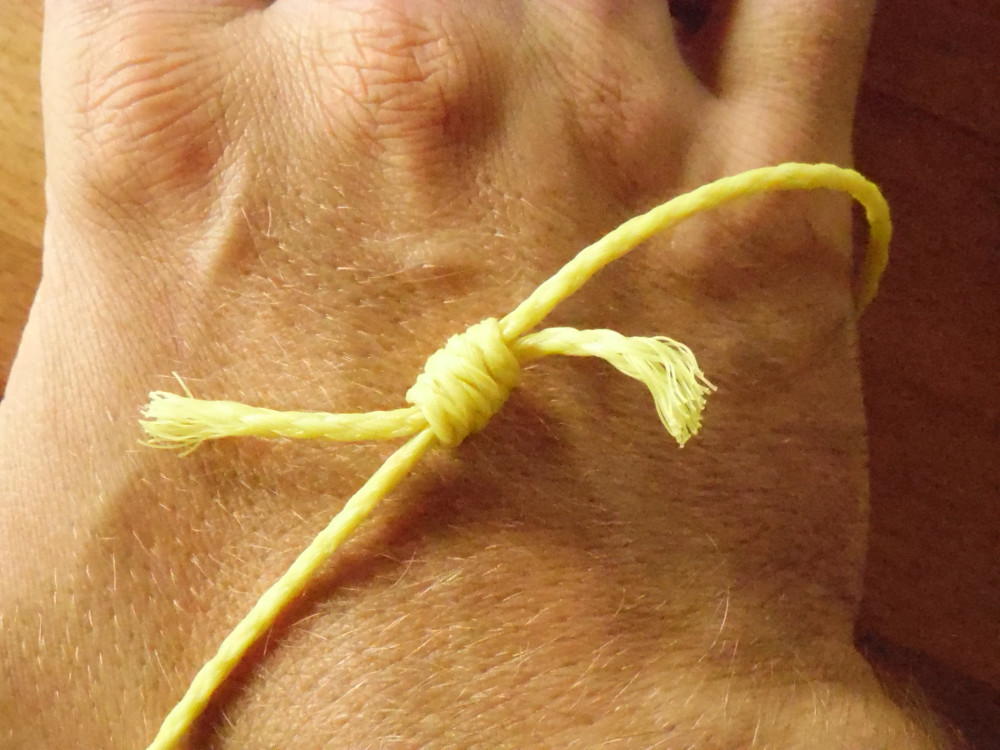
3. Set up the two-legged frame and temporarily anchor it
Attach one end of the hammock to the tree. This will determine where the two-legged frame needs to stand. I always attach my hammock directly to the two-legged frame to hang as high as possible above the ground. The frame can stand upright and is temporarily held in position with a tent stake and a rope. The easiest way to hang the hammock on this self-made hammock stand as a tree substitute is to use a ridgeline. The ridgeline sets the final angle for the hammock under load.
4. Build the anchoring
The cord rope is wrapped one or two times around the tops of the tent poles at their midpoint. Then both ends of the climbing rope are laid backward at an acute angle of approximately 45°, and two carabiners are attached to each loop.
5. Lay out the throw line slings
Lay out the two throw line slings in their final form and click them into the carabiners. The six “fingers” of the laid-out throw lines already show the approximate positions of the tent stakes in the ground.
6. Secure the tent stakes in the ground and tension the anchoring
Insert the tent stakes into the six ends of the “fingers” of both throw line slings. During this process, the entire anchoring is tightened with the hammock to the two-legged frame. Thanks to the self-centering anchoring, you can choose the optimal positions for the carabiners based on the characteristics of the ground. The angle between the tent stake in the ground and the attached anchoring should ideally be 90°. The angle between each “finger” should not exceed 45°.

Conclusion: Attaching a hammock to just one tree and a portable hammock stand
In practice, this system is quickly set up and much lighter and more portable than any other full grown hammock stand. The self-centering anchoring might sound complicated at first, but the second assembly is usually much faster because the system is quite intuitive. Especially after experiencing the self-centering effect firsthand. A little extra effort in anchoring really has a remarkable impact on safety.
And with this lightweight portable hammock stand, I can attach my favorite camping hammock anywhere to just one tree, giving me much more freedom in choosing my favorite place for the hammock.